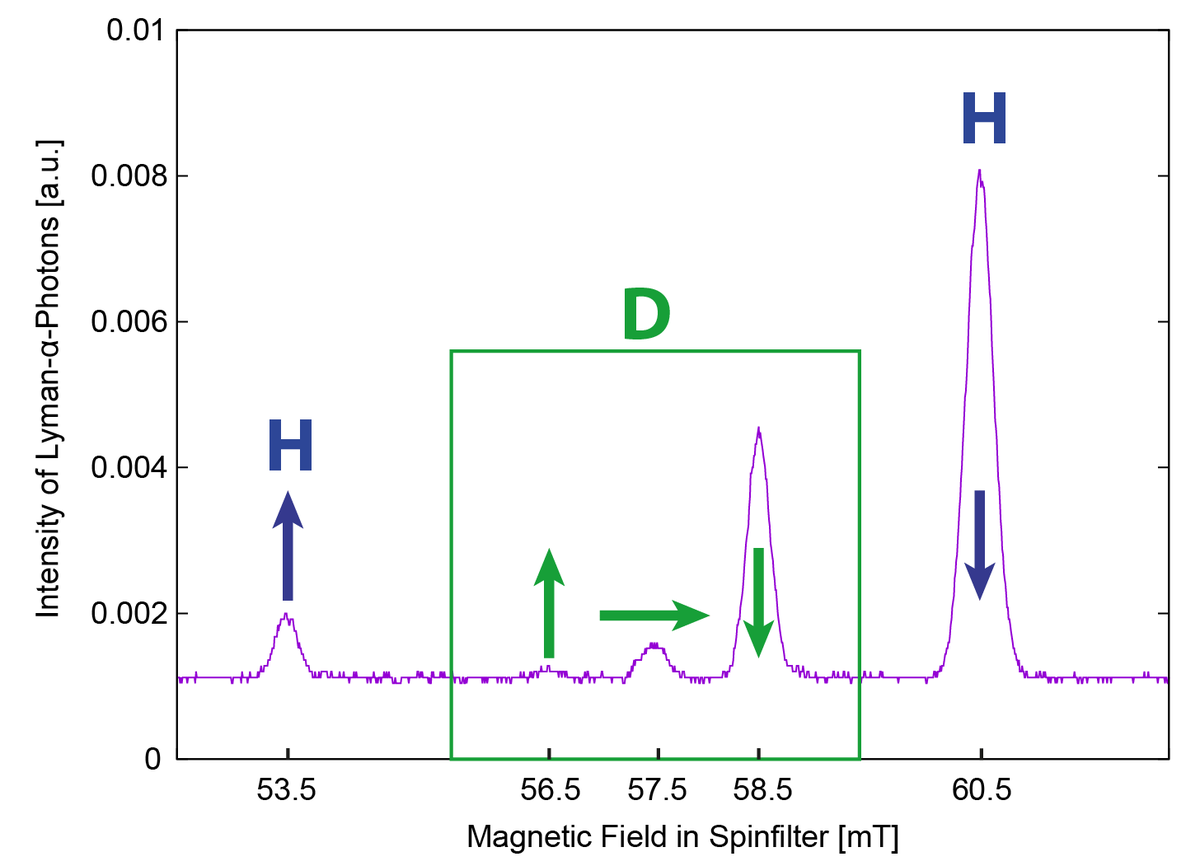Lamb-shift Polarimeter (LSP)
To measure the nuclear polarization of hydrogen and deuterium beams in any kind of manifestation (p, H-, H, H2, H2+, H3+) a Lamb-shift polarimeter (LSP) has proven to be a unique tool. First of all, the atoms and molecules are ionized by electron bombardment inside a strong magnetic field to preserve the nuclear spin. Then, the polarized protons/deuterons or the H2+, D2+or HD+ molecular ions are accelerated through a Cesium cell to produce metastable hydrogen/deuterium atoms in the 2S1/2 state by charge exchange with the Cesium vapor. The main component of this polarimeter is the “spinfilter”, which is able to separate metastable hydrogen atoms in single hyperfine substates from each other. Afterwards, the remaining metastable atoms are quenched into the ground state with strong electric fields by the Stark effect. The amount of emitted Lyman-α photons for each substate with different nuclear spin is measured using a photomultiplier. Thereby the relative occupation of the different nuclear spin states of the primary protons/deuterons and the H2+, D2+or HD+ molecular ions can be deduced, which allows to calculate the polarization of the atoms and molecules at the entrance of the polarimeter.


In the last years several Lamb-shift polarimeter are built in the IKP-2 and are in use for different projects worldwide:
- At the Budker institute for nuclear physics in Novosibirsk a LSP is measuring the nuclear polarization of polarized H2 and D2 molecules produced due to the Stern-Gerlach effect in a superconducting sextupole magnet.
- Within the bound-beta decay experiment (BOB) project of the technical university of Munich (TUM) a LSP will be used to measure the occupation numbers of hydrogen atoms that are produced within the rare neutron decay n-> H2S + . Thus, the helicity of the anti-electron neutrino can be determined that might give new insights of the weak nuclear force.
- Meanwhile, a LSP was mounted at the pulsed polarized H- source of COSY to optimize the polarization without use of the pre-accelerator JULIC.
- Up to now, the spinfilter is only able to separate the hyperfine substates α1(mJ=+1/2/mI=+1/2) and α2 ((mJ=+1/2/mI=-1/2). A modified version under construction will separate all four hyperfine substates.
